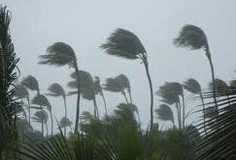
Emergency kits are extremely important to have on hand in the event of an emergency. They provide you with the tools you need without having to try to find anything in the throws of a major emergency. With emergency kits, you can just grab the bag and have whatever you need at your fingertips – providing you have those things in your kit. Let’s take a look at the 10 items every emergency kit should have, whether it is in your car or your home.
1. First Aid Kit – a first aid kit has the medical supplies that you will need in the event of an emergency. Be sure that you purchase a good first aid kit that has more than just Band-Aids in it. It should have band-aids, gauze, tape, scissors, antiseptic, alcohol pads, and topical analgesic, just for starters. You can also ensure you have some splint material and a sling or two to fashion splints or slings. Be sure that if you use any items from the first aid kit that you replenish it right away.
2. Radio and batteries – a radio and batteries will provide you information if your power goes out. Leave the batteries out of the radio; just tape them to the radio so they don’t get lost.
3. Flashlight and batteries – in the event of an emergency, you may need light, whether it’s to change a flat tire or navigate bumpy terrain after a major emergency. Once again, don’t leave the batteries in the flashlight – tape them to the handle so you can easily find them when you need to install them.
4. Candles, waterproof matches and a lighter – candles provide more than just light – they can also warm up a small space, such as the cab of a vehicle or a small room.
5. Blanket – there are plenty of blankets for sale that wrap up into a nice, tight little bundle and are specifically for emergency kits. It’s a good idea to have a few on hand, in case there are extra people who require a blanket.
6. Bottled water – keeping a few bottles of water in your kit will ensure that you have something to drink if there is a catastrophe, or for other uses too; such as your car overheating and needing water to get the rest of the way home.
7. Energy bars and other non-perishable foods – keeping a few bars and some extra food that aren’t perishable are a good idea as well. Be sure that you use foods that are easy to open and don’t require a can opener. Energy bars are a good meal replacement if you can’t get to food for a few days. You can also include a small bottle or packets of vitamin supplements.
8. Cash – for both home and cars, it’s a good idea to have some emergency cash on hand. It’s your kit, so go with what you feel comfortable with. One hundred dollars is suitable – remember if there’s a major emergency, you may not be able to use your debit or credit cards.
9. Pencil and paper – keeping a pencil and paper in your kit is a good idea in case you need to write down important information that you hear on the radio. In a vehicle, you may need to write down information pertinent to your location, or information regarding the emergency, such as a major collision.
10. Cell phone – If you already have a cell phone, that should be fine, but you can invest in a pay-as-you-go plan if you don’t. A cell phone can come in handy regardless of the type of emergency – you should always have one with you in a vehicle in case of break down, collision or an emergency.
Being prepared for an emergency will make a big difference in how you react and act in the event. Having a proper emergency kit will help you have the tools you need and you will find that you are much calmer knowing that you are prepared to handle the event.

Source by Mark Warner
 Vitamin Agent The Health & Naturalistic Source
Vitamin Agent The Health & Naturalistic Source





